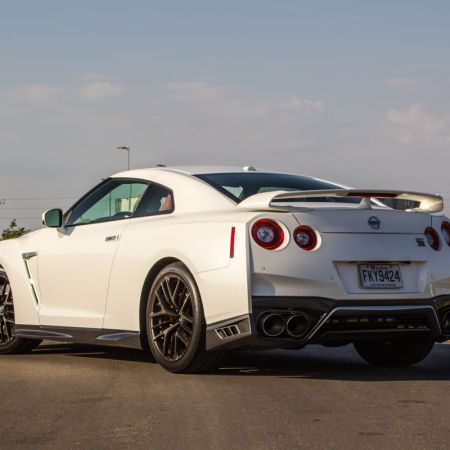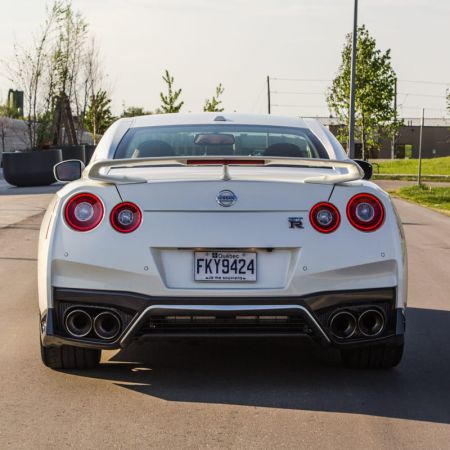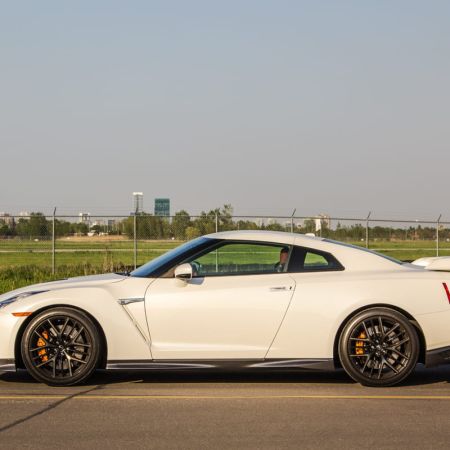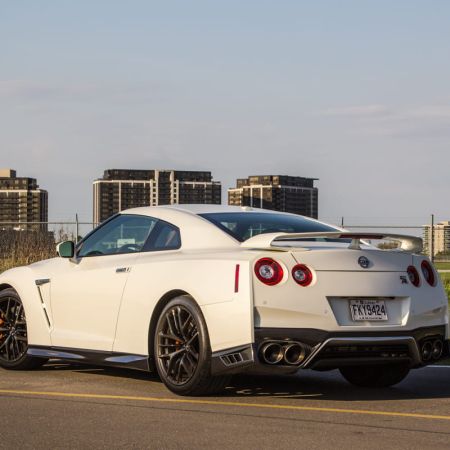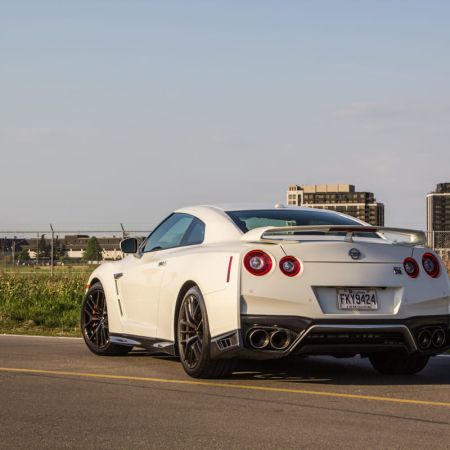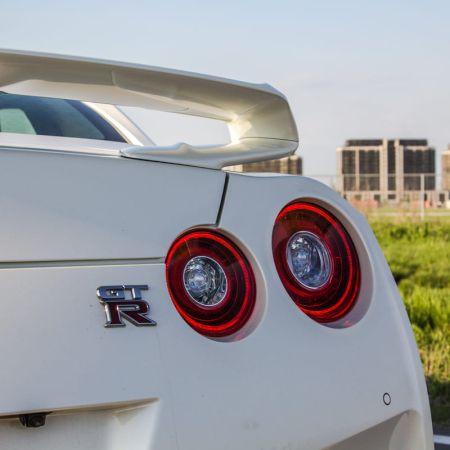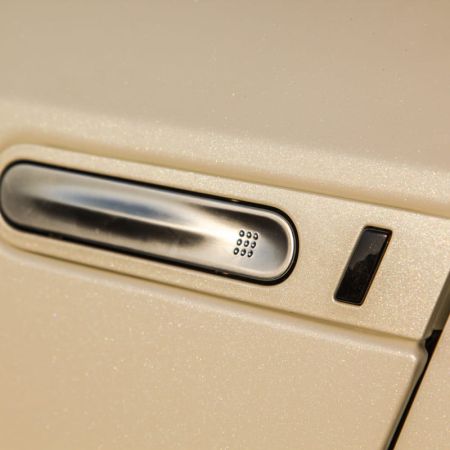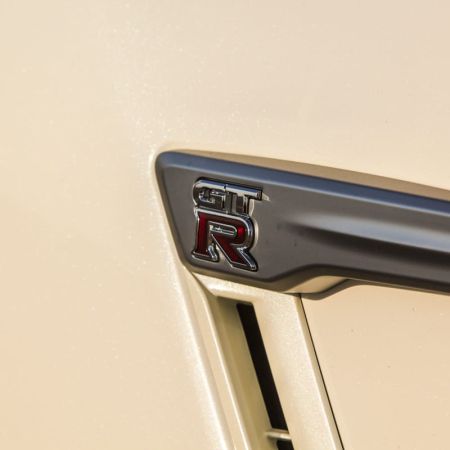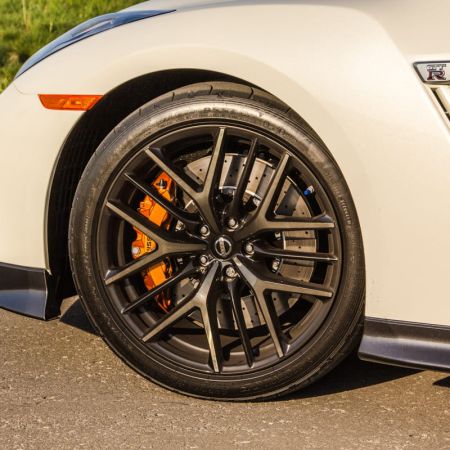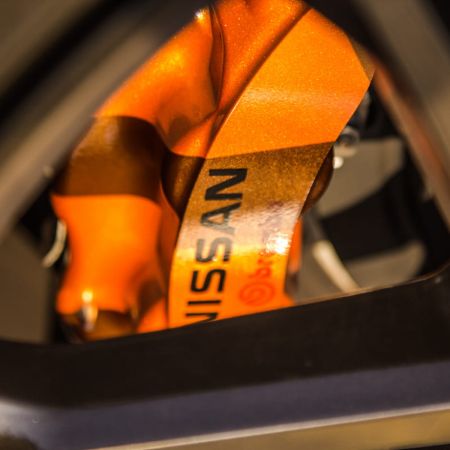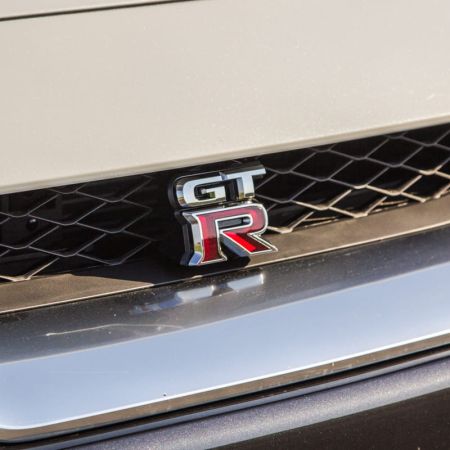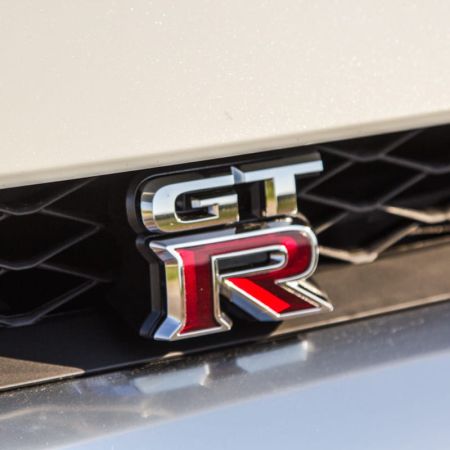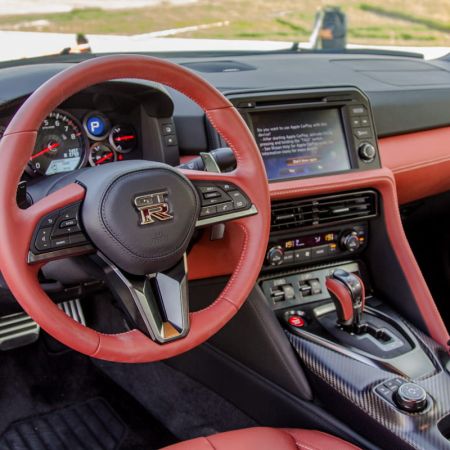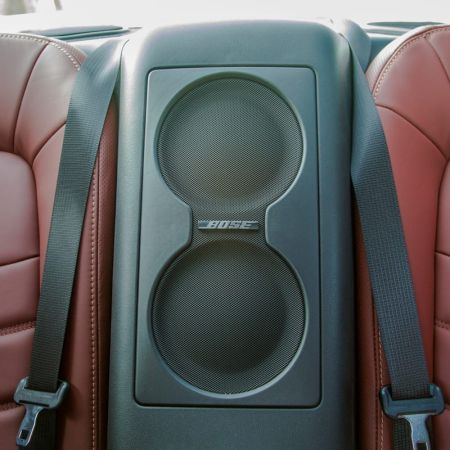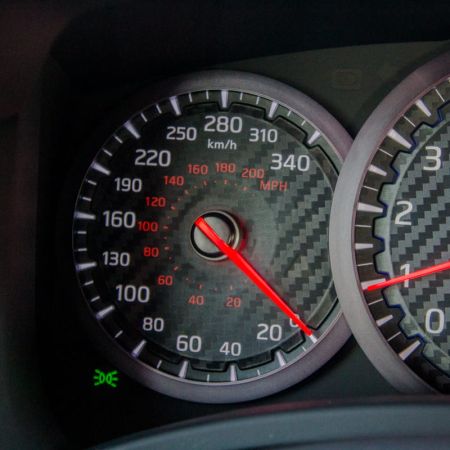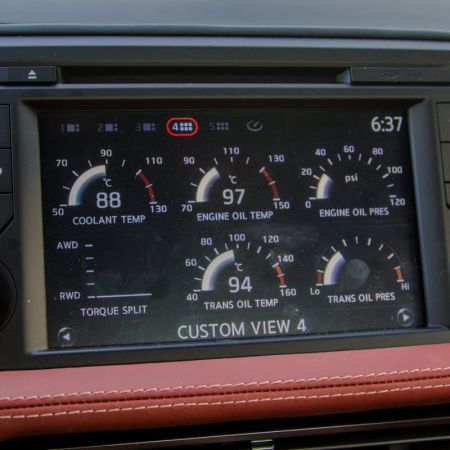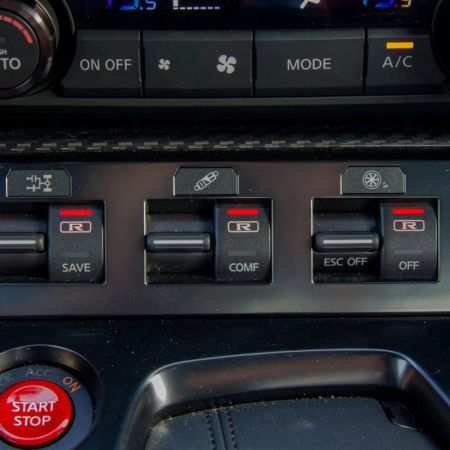…but the 2018 Nissan GT-R Premium is still trying to keep things fresh and relevant. Very few cars have remained unchanged that time span, with only a few cars like the Toyota Sequoia and now-departed Mitsubishi Lancer coming to mind. The GT-R is a bit different, however – it’s a no compromises sports car that was extremely ahead of its time when it came out for the 2008 model year. With a few changes along the way and refreshes in 2011 and 2017, “Godzilla” still generates a lot of buzz both on the road and on the Internet.
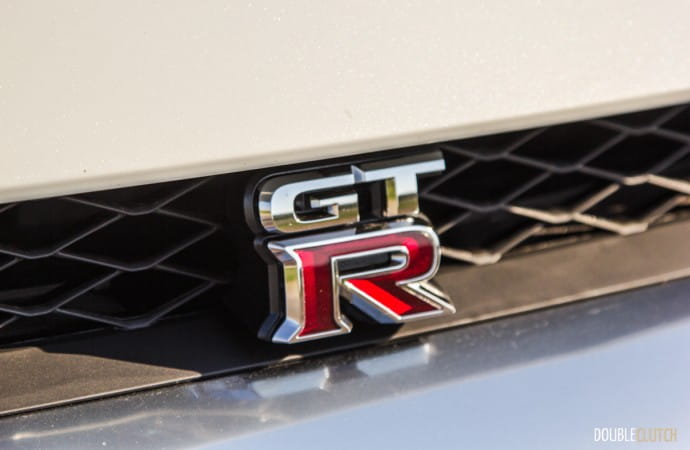
Controversy is no stranger to the Nissan GT-R. Its on-paper performance is jaw-dropping, with documented 0-60 miles per hour (96 kilometres per hour) sprints happening in 2.7 seconds. Many versions of the GT-R have been setting and breaking records on Germany’s fabled Nurburgring circuit – the longest race track in the world – and it takes some seriously heavy arsenal to even come close. Porsche needs the likes of the 911 GT3 in order to compete, and in a straight line, acceleration kings like the Tesla Model X P100D (reviewed here) are what’s required to take the GT-R down.
In addition the blistering performance figures, some complaints have arisen over time that the GT-R is lacking a bit in “soul” or engagement during the driving process. Those who associate the advanced computer systems controlling the powertrain and ATTESA E-TS all-wheel drive may also say that the car is doing all the driving for the driver. Generally, those who think so have never driven the GT-R – while it’s true that other products do deliver more steering feel when driven at a more sedate pace, the ridiculously high grip limits and torque vectoring to the rear mean that there is plenty of fun to be had.
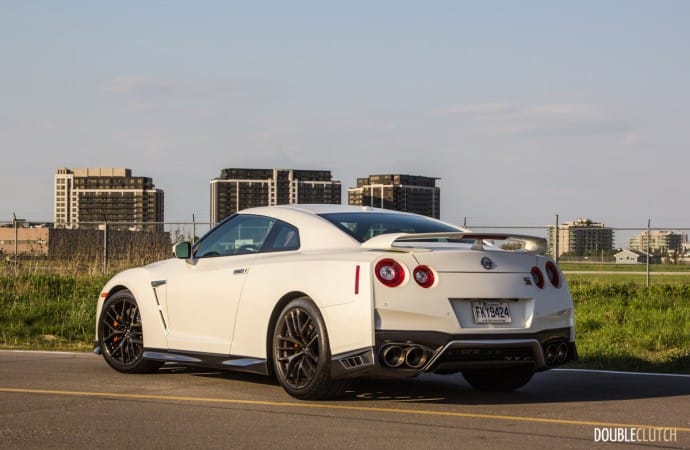
In base Premium form (as opposed to the Track Edition), the GT-R does like to understeer at the limit when in a corner, but does so predictably. To take advantage of the trick all-wheel drive system, aggression with the throttle is often needed to rotate the car into the corner and turn the understeer into something between neutral and oversteer. The Nissan’s ability to accelerate into and out of corners is unparalleled, and is how a smile gets put on your face.
For those who like to go from a dig, launch control is available by selecting the traction control option out of three “R” modes – the other two being for differential and suspension. Hold the brake, bring the accelerator to the floor, and the GT-R will hold at about 4,000RPM until you release the brake. At this point, all four wheels chirp, and you’re hanging on for dear life as you approach breakneck speeds. When you decide you’ve had enough, the big Brembo brakes rearrange your face and internal organs with good pedal feedback and very short stopping distance. This is in no doubt helped by the (inhale!) Dunlop SP Sport Maxx GT 600 DSST CTT run-flat tires, which measure 255/40ZR20 up front and 285/35ZR20 in the rear.

In order to provide for the warp-speed acceleration, a hand-built-in-a-clean-room 3.8L, twin-turbocharged V6 does duty in the GT-R (“VR38DETT” in the Nissan world), pumping out 565 horsepower at 6,800RPM and 467 lb-ft of torque between 3,300 and 5,800RPM. There are only four master craftsmen – known as takumi – who are qualified to assemble the engines in Nissan’s Yokohama plant in Japan. One Mr. Izumi Shioya was at the helm for the test car’s engine, and the visceral performance is the fruit of his labour and passion.
While the engine note, as a turbo V6, isn’t as good as say, other eight-cylinder or naturally aspirated designs, the sheer amount of torque and response of the GT-R puts it in a very special place in the automotive enthusiast world. There’s huge induction noise from both inside and out as the turbos gulp for air, creating a huge feeling of an untamed monster roaming the streets of Tokyo. There’s a strong sense of urgency; if you want to go fast, you can do so immediately.
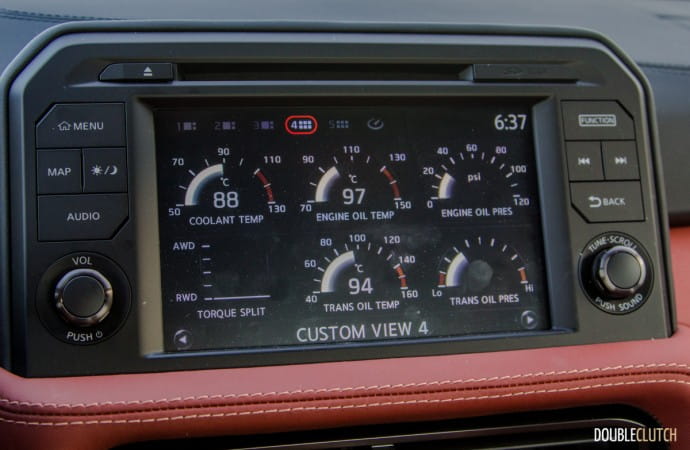
Coupled to the boosted V6 is a rear-mounted six-speed dual clutch transmission. As one of the earlier DCT style gearboxes on the market, it’s fairly easy to say that low-speed refinement is not a strong suit in the GT-R, but it’s not nearly as bad as others would make it seem. Under sedate cruising conditions, the paddle shifters in manual mode is not really a good idea due to laggy responses that are sometimes ignored altogether. Instead, keeping things in automatic make the car incredibly streetable and easy to handle on a day-to-day basis, even with short gearing that sees higher cruising RPMs. When the going gets fast, however, manual mode does much better and offers quick gearchanges and better control.
While most people don’t buy a Nissan GT-R for its fuel economy, for science, it is rated at 14.5L/100KM in the city, and 10.7L/100KM on the highway. Observed consumption over our test returned 13.8L/100KM, with a bias towards highway driving, but also with a heavy foot. A minimum of 93-octane fuel is required, and fuel capacity is 73.8 litres.
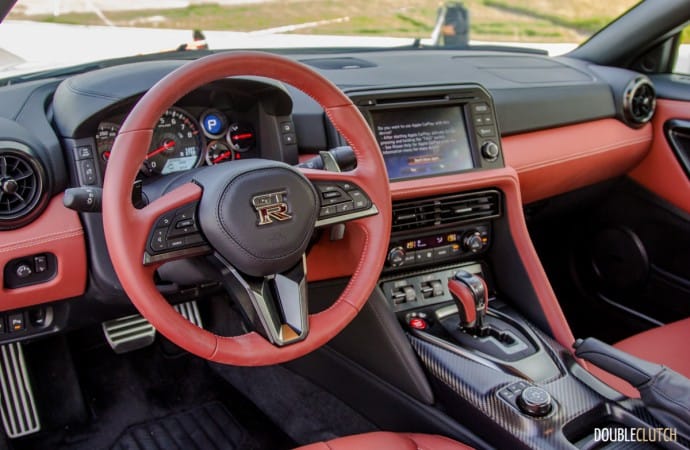
When driving normally, suspension stiffness in normal mode is surprisingly compliant, but isn’t soft by any stretch of the imagination. It’s good enough to be driven daily in any manner. The aggressive tires make for a good amount of road noise transferred through into the cabin, and there’s also a bit of exhaust drone if cruising between 2,700 and 3,000RPM. Thankfully, the Bose audio performs well and does keep you entertained on longer drives. Seat comfort for larger occupants may not be the greatest, thanks to overly aggressive bolsters that really hug you, and rear seat legroom is merely a suggestion.
Inside, the GT-R has a handsome interior finished in an optional Rakuda Tan semi-aniline leather. There are buttons and switches for most major functions, and also a control wheel for the central infotainment. The previously mentioned Bose audio is accompanied by Apple CarPlay smartphone connectivity (sorry, Android users – only plain Bluetooth for you), SiriusXM satellite radio, and navigation.
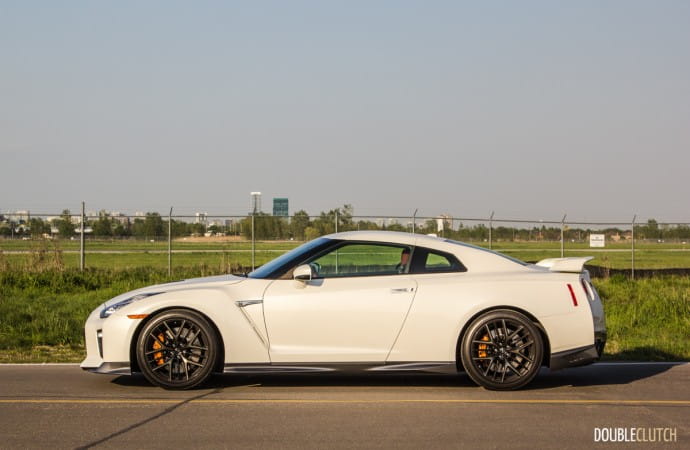
The main infotainment screen also has a multitude of gauge readouts available, and during the GT-R’s time on test, coolant temperature, engine oil temperature, engine oil pressure, front-rear torque split, transmission oil temperature, and even transmission oil pressure were monitored. This is a great car for data nerds, although the older style infotainment is definitely showing its age with clunky menus and lower screen resolution.
For all your trouble, getting your hands on a 2018 Nissan GT-R Premium will set you back at least $125,600. The optional semi-aniline leather was $5,300 extra, bring the total as-tested price to $130,900. Although some of the many forms Porsche 911 can be in the same ballpark, it’ll take a good bit more money than the GT-R to outfit the 911 with all the right goodies and gadgets. The GT-R is by no means a cheap car, of course, but it does return a solid value even after spending ten years on the market (with a series of price and performance increases along the way). The naysayers, which include some members of our own team, may not be understanding the Nissan GT-R as well as they should. It’s a beast that does what it is built to do extremely well, and is very much full of soul and adrenaline-pumping action. You don’t mess with Godzilla!
See Also:
2017 Nissan GT-R Premium



